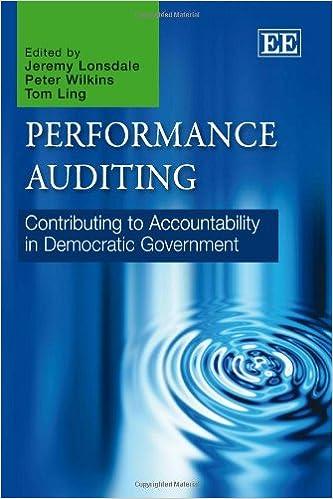Question
1. Robledo Corporation produces and sells a single product. Data concerning that product appear below: Per Unit Percent of Sales Selling price $100 100% Variable
1. Robledo Corporation produces and sells a single product. Data concerning that product appear below:
| Per Unit | Percent of Sales | |
| Selling price | $100 | 100% |
| Variable expenses | 20 | 20% |
| Contribution margin | $ 80 | 80% |
Fixed expenses are $625,000 per month. The company is currently selling 9,000 units per month. Management is considering using a new component that would increase the unit variable cost by $3. Since the new component would increase the features of the company's product, the marketing manager predicts that monthly sales would increase by 400 units. What should be the overall effect on the company's monthly net operating income of this change?
2.Bendel Inc. has an operating leverage of 7.3. If the company's sales increase by 3%, its net operating income should increase by about:
3. Feery Company, which has only one product, has provided the following data concerning its most recent month of operations:
| Selling price | $110 |
| Units in beginning inventory | 0 |
| Units produced | 3,800 |
| Units sold | 3,700 |
| Units in ending inventory | 100 |
| Variable costs per unit: | |
| Direct materials | $32 |
| Direct labor | $34 |
| Variable manufacturing overhead | $6 |
| Variable selling and administrative | $11 |
| Fixed costs: | |
| Fixed manufacturing overhead | $68,400 |
| Fixed selling and administrative | $14,800 |
What is the net operating income for the month under absorption costing?
| 4.Pevy Corporation has two divisions: Southern Division and Northern Division. The following data are for the most recent operating period:
The common fixed expenses have been allocated to the divisions on the basis of sales. The Northern Division's break-even sales is closest to: 5. Ort Corporation has provided the following data from its activity-based costing accounting system: Indirect factory wages$ 360,000Factory equipment depreciation$ 100,000Distribution of Resource Consumption across Activity Cost Pools: Activity Cost PoolsCustomer OrdersProduct ProcessingOtherTotalIndirect factory wages60%30%10%100%Factory equipment depreciation20%60%20%100%The "Other" activity cost pool consists of the costs of idle capacity and organization-sustaining costs that are not assigned to products. How much indirect factory wages and factory equipment depreciation cost would NOT be assigned to products using the activity-based costing system? 6. Mcallister Corporation has provided the following data concerning its only product:
The margin of safety as a percentage of sales is closest to: 7. Abdi Company, which has only one product, has provided the following data concerning its most recent month of operations:
8. What is the unit product cost for the month under absorption costing? A company that makes organic fertilizer has supplied the following data:
The company's margin of safety in units is closest to: 9. Paul Company has two products: A and B. The company uses activity-based costing. The total cost and activity for each of the company's three activity cost pools are as follows:
The activity rate under the activity-based costing system for Activity 3 is closest to: 10. Monson Corporation has two products: G and P. The company uses activity-based costing and has prepared the following analysis showing the total cost and activity for each of its three activity cost pools:
The annual production and sales of Product G is 10,640 units. The annual production and sales of Product P is 26,600. The cost per unit of Product P under activity-based costing is closest to: |
Step by Step Solution
There are 3 Steps involved in it
Step: 1

Get Instant Access to Expert-Tailored Solutions
See step-by-step solutions with expert insights and AI powered tools for academic success
Step: 2

Step: 3

Ace Your Homework with AI
Get the answers you need in no time with our AI-driven, step-by-step assistance
Get Started


